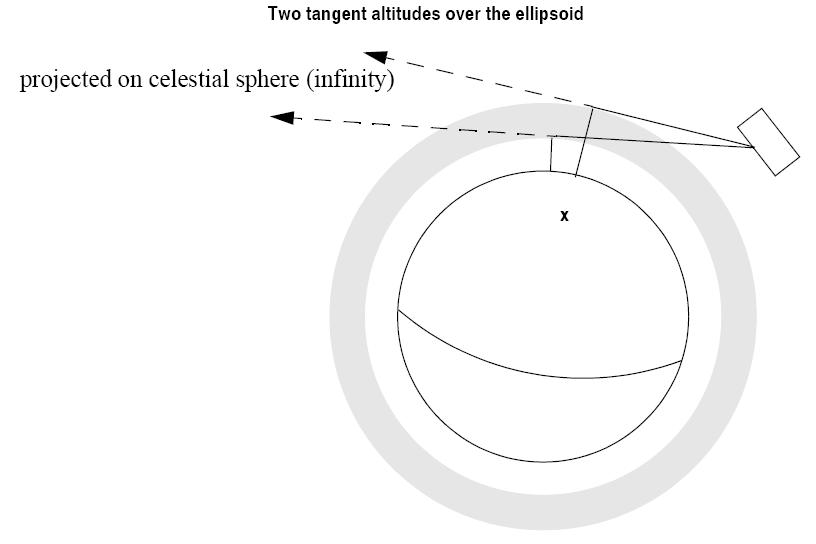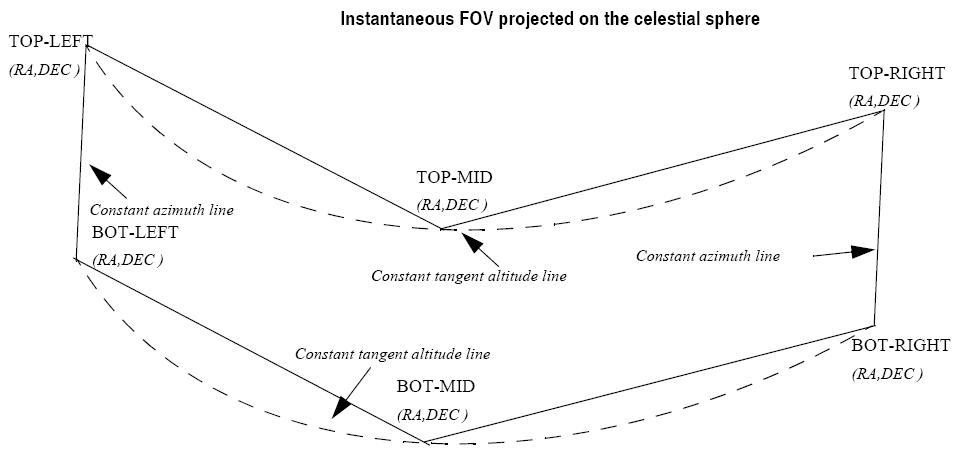 |
Earth Observation Mission CFI Software Visibility Software User Manual for JAVA |
 |
 |
Earth Observation Mission CFI Software Visibility Software User Manual for JAVA |
 |
Class to make operations involving a swath for star visibility. More...

Public Member Functions | |
| SwathStar () | |
| Empty Class constructor. | |
| SwathStar (final OrbitId orbitId, String swathFileUpper, String swathFileLower) throws CfiError | |
| Class constructor with parameters, for star visibility with STF file. | |
| SwathStar (final OrbitId orbitId, long orbitNum, String swathFileUpper, String swathFileLower) throws CfiError | |
| Class constructor with parameters, for star visibility, with SDF file. | |
| void | set (final OrbitId orbitId, String swathFileUpper, String swathFileLower) throws CfiError |
| Set values of parameters, for star visibility, with STF file. | |
| void | set (final OrbitId orbitId, long orbitNum, String swathFileUpper, String swathFileLower) throws CfiError |
| Set values of parameters, for star visibility, with SDF file. | |
| VisibilityListStar | starVisTime (long startOrbit, long stopOrbit, String starId, String starDBFile, double minDuration) throws CfiError |
| Calculate the visibility segments for which a star is visible from the satellite using a star database. | |
| VisibilityListStar | starVisTime (long startOrbit, long stopOrbit, double starRa, double starDec, double minDuration) throws CfiError |
| Calculate the visibility segments for which a star is visible from the satellite using the Right ascension and declination of a star. | |
Class to make operations involving a swath for star visibility.
| EECFI.SwathStar.SwathStar | ( | ) |
Empty Class constructor.
| EECFI.SwathStar::SwathStar | ( | final OrbitId | orbitId, | |
| String | swathFileUpper, | |||
| String | swathFileLower | |||
| ) | throws CfiError |
Class constructor with parameters, for star visibility with STF file.
| orbitId | Orbit Id. | |
| swathFileUpper | File name of the inertial swath-file for the appropiate instrument mode, which defines the upper limit of the FOV. | |
| swathFileLower | File name of the inertial swath-file for the appropiate instrument mode, which defines the lower limit of the FOV. |
| EECFI.SwathStar::SwathStar | ( | final OrbitId | orbitId, | |
| long | orbitNum, | |||
| String | swathFileUpper, | |||
| String | swathFileLower | |||
| ) | throws CfiError |
Class constructor with parameters, for star visibility, with SDF file.
| orbitId | Orbit Id. | |
| orbitNum | Swath points are generated every "orbitNum" orbits. | |
| swathFileUpper | File name of the inertial swath-file for the appropiate instrument mode, which defines the upper limit of the FOV. | |
| swathFileLower | File name of the inertial swath-file for the appropiate instrument mode, which defines the lower limit of the FOV. |
| void EECFI.SwathStar::set | ( | final OrbitId | orbitId, | |
| String | swathFileUpper, | |||
| String | swathFileLower | |||
| ) | throws CfiError |
Set values of parameters, for star visibility, with STF file.
| orbitId | Orbit Id. | |
| swathFileUpper | File name of the inertial swath-file for the appropiate instrument mode, which defines the upper limit of the FOV. | |
| swathFileLower | File name of the inertial swath-file for the appropiate instrument mode, which defines the lower limit of the FOV. |
| void EECFI.SwathStar::set | ( | final OrbitId | orbitId, | |
| long | orbitNum, | |||
| String | swathFileUpper, | |||
| String | swathFileLower | |||
| ) | throws CfiError |
Set values of parameters, for star visibility, with SDF file.
| orbitId | Orbit Id. | |
| orbitNum | Swath points are generated every "orbitNum" orbits. | |
| swathFileUpper | File name of the inertial swath-file for the appropiate instrument mode, which defines the upper limit of the FOV. | |
| swathFileLower | File name of the inertial swath-file for the appropiate instrument mode, which defines the lower limit of the FOV. |
| VisibilityListStar EECFI.SwathStar::starVisTime | ( | long | startOrbit, | |
| long | stopOrbit, | |||
| String | starId, | |||
| String | starDBFile, | |||
| double | minDuration | |||
| ) | throws CfiError |
Calculate the visibility segments for which a star is visible from the satellite using a star database.


| startOrbit | First absolute orbit, segment filter; segments will be filtered as from the beginning of first orbit. First Orbit for the orbit initialization will be used when absolute orbit is set to zero. Allowed range: =0; or >=start_osf. | |
| stopOrbit | Last absolute orbit, segment filter. For orbitId initialized with orbital changes, when stopOrbit = 0 the stopOrbit will be set to the minimum value between:
Allowed range: =0; or >=start_osf. | |
| starId | Identification of the star, as defined in starDBFile. | |
| starDBFile | File name of the star database file. | |
| minDuration | Minimum duration for segments; only segments with a duration longer than minDuration will be given as output [s]. Allowed range: >=0. |
| VisibilityListStar EECFI.SwathStar::starVisTime | ( | long | startOrbit, | |
| long | stopOrbit, | |||
| double | starRa, | |||
| double | starDec, | |||
| double | minDuration | |||
| ) | throws CfiError |
Calculate the visibility segments for which a star is visible from the satellite using the Right ascension and declination of a star.
| startOrbit | First absolute orbit, segment filter; segments will be filtered as from the beginning of first orbit. First Orbit for the orbit initialization will be used when absolute orbit is set to zero. Allowed range: =0; or >=start_osf. | |
| stopOrbit | Last absolute orbit, segment filter. For orbitId initialized with orbital changes, when stopOrbit = 0 the stopOrbit will be set to the minimum value between:
Allowed range: =0; or >=start_osf. | |
| starRa | Right ascension of star, in TOD. Only used if starDBFile is not equal to the empty string ("") [deg]. Allowed range: (-180., 180). | |
| starDec | Declination of star, in TOD. Only used if starDBFile is not equal to the empty string ("") [deg]. Allowed range: (-90., 90). | |
| minDuration | Minimum duration for segments; only segments with a duration longer than minDuration will be given as output [s]. Allowed range: >=0. |
 1.7.1
1.7.1